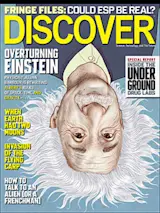Eric Courchesne managed to find a positive thing about getting polio: It gave him a clear idea of what he would do when he grew up. Courchesne was stricken in 1953, when he was 4. The infection left his legs so wasted that he couldn’t stand or walk. “My mother had to carry me everywhere,” he says. His parents helped him learn how to move his toes again. They took him to a pool to learn to swim. When he was 6, they took him to a doctor who gave him metal braces, and then they helped him learn to hobble around on them. Doctors performed half a dozen surgeries on his legs, grafting muscles to give him more strength.
Courchesne was 11 when the braces finally came off, and his parents patiently helped him practice walking on his own. “Through their encouragement, I went on to have dreams beyond ...














